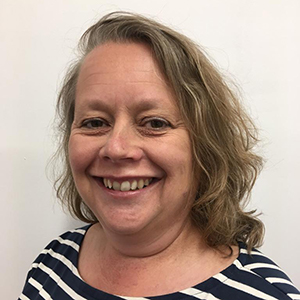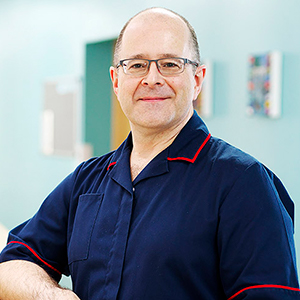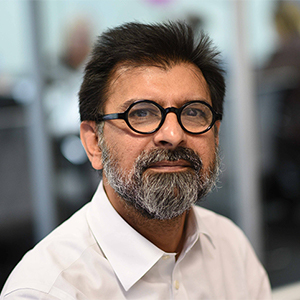As healthcare services adapted to meet the coronavirus challenge, Health Innovation East also quickly realigned our teams to support the national and regional responses where it was most needed.
Due to my clinical background, I returned to support my local intensive care unit (ICU) as a nurse. Here are the four things I took away from the experience.
-
There is so much potential in the NHS workforce
As reflected in the recent NHS People Plan, staff have risen to the challenge and have been flexible and adaptable. Working on COVID-19 wards was at times very difficult, but it was vital work and so many nurses and medics will have gained valuable experience in new clinical environments and learned new skills.
I was so inspired by the team spirit, passion, pooled resourcing and collaboration I saw every day. I have always believed that the clinical workforce is inherently innovative, adopting best practice and constantly learning, which was evident in how we reconfigured staffing models across the healthcare system in reaction to COVID-19. It served as a great reminder of the importance of our work at Health Innovation East in the Patient Safety Collaborative to share the latest quality improvement initiatives, because there’s always new things we can learn.
-
Human factors need to be considered in every clinical setting, and COVID-19 wards are no different
I have taught human factors and ergonomics to staff across the region. During this work I am always fascinated to see how if we step back, review and adapt processes we can spot areas to make improvements to improve patient safety and make working practices as efficient and effective as possible. Routine activities can have added risk with the added complication of PPE. Staff can’t always move as quickly. Communication can be difficult and visibility can be an issue when wearing a visor.
The workforce on the ward quickly spotted potential difficulties and took appropriate measures; clear, concise drug and apparatus labelling and magnifying glasses reduced the possibility of drug errors, while staff wrote their names and roles on their PPE to help quickly identify each other and reduce the need for verbal interaction. Sometimes the simplest solutions are the most effective and they can come from anyone in a clinical environment.
-
The importance of advanced clinical planning across all care environments
For the best patient outcomes, it is vital that we identify and act when a patient’s condition is deteriorating and have a plan for end of life care to give someone the best chance of receiving treatment where they want to be, whether at home or in a care setting.
My primary role at Health Innovation East has been supporting the adoption and spread of the soft signs, NEWS2 and SBAR model in our region as part of the Patient Safety Collaborative managing deterioration workstream. These tools used together allow care professionals to spot the early signs of deterioration or sepsis are escalate them before an illness worsens.
The tools originated from ICUs and have subsequently been rolled out across the acute and ambulatory sectors, so seeing them in use on the wards was a great reminder of how they make a difference. The COVID-19 pandemic has shown the importance of supporting the care sector to be more integrated in the system and improving communication between social care and healthcare services. In recent months we have made huge progress in this integration, including the roll out of remote monitoring with NEWS2 scoring across care homes to help GPs prioritise and treat vulnerable patients.
-
We need to keep talking about mental health in our workforce
Like many, I found lockdown difficult. Working in an ICU can be distressing under any circumstances but the additional stress of working in PPE, fear of coronavirus and being unable to visit loved ones to decompress left some staff struggling. When you are wearing gloves, a patient isn’t able to feel your hand in the same way and they can’t see your facial expressions such as a smile. Over the years I have learnt to be resilient and focus on the positives to help deal with stress. One example was the impact of even small things on a patient’s experience. Being able to help a patient video call their family from the ICU is a moment I will always remember.
The wellbeing rooms also made a real difference. For clinical staff it meant we could reflect and destress, so I hope we can retain them and build on a renewed culture of support. The focus on staff mental health was welcome as it made everyone talk about their wellbeing and destigmatised a problem which can often go ignored. As we continue to discuss the NHS Reset work and what we can learn from the pandemic response, staff wellbeing has to remain part of the conversation.
A proud nurse
My final reflection is how proud I am to be a nurse. As I return to the day job at Eastern ASHN I know that despite not being in a patient-facing role, I love being part of a community which goes the extra mile for our patients and is so passionate about providing the best possible care. I see how the work of the Patient Safety Collaborative and Health Innovation East provides the tools to frontline services which make such a difference for patients, through the pandemic response and well into the future.

I am the clinical lead for deterioration within the Eastern Patient Safety Collaborative, focused on ‘soft signs’ of identifying deterioration alongside NEWS2 and the use of a structured communication tool (SBAR) across primary care in the region.
I hold a Master’s degree in Patient Safety Management from Loughborough University and have a plethora of clinical experience in critical and intensive care nursing, specialising in the deteriorating patient, escalation and response. I have worked in general, tertiary referral and teaching hospitals across the UK managing both critical care outreach and out of hours teams. I was influential in the design and implementation of electronic observations in a large teaching hospital in the midlands, and I also introduced medical safety handovers using a task management system and SBAR to support efficient team working at the trust, completing QI projects on device management and workforce utilisation out of hours through utilising live data feeds.
I have a special interest in clinical human factors and am a member of Loughborough’s alumni and Q.
Share your idea
Do you have a great idea that could deliver meaningful change in the real world?
Get involved
